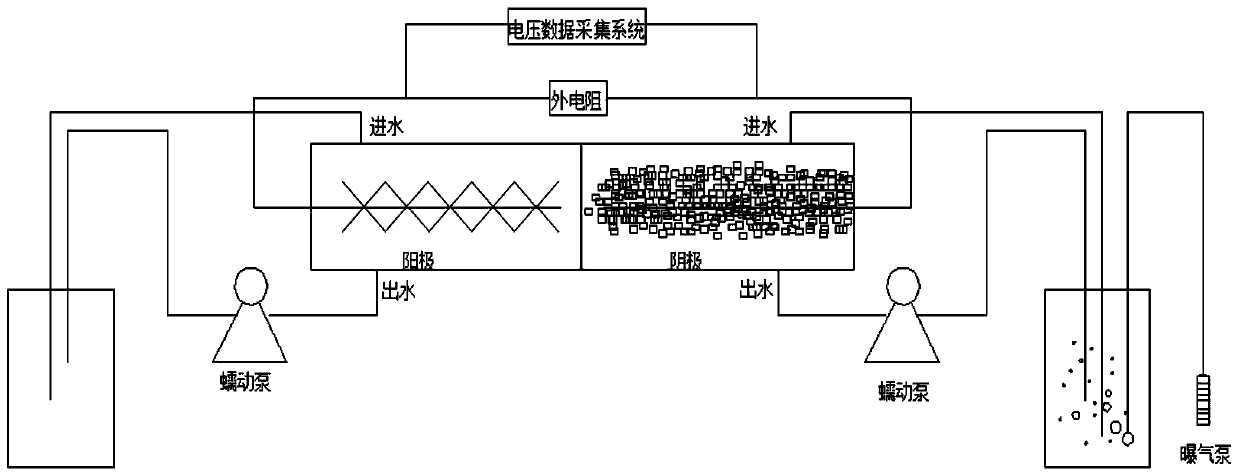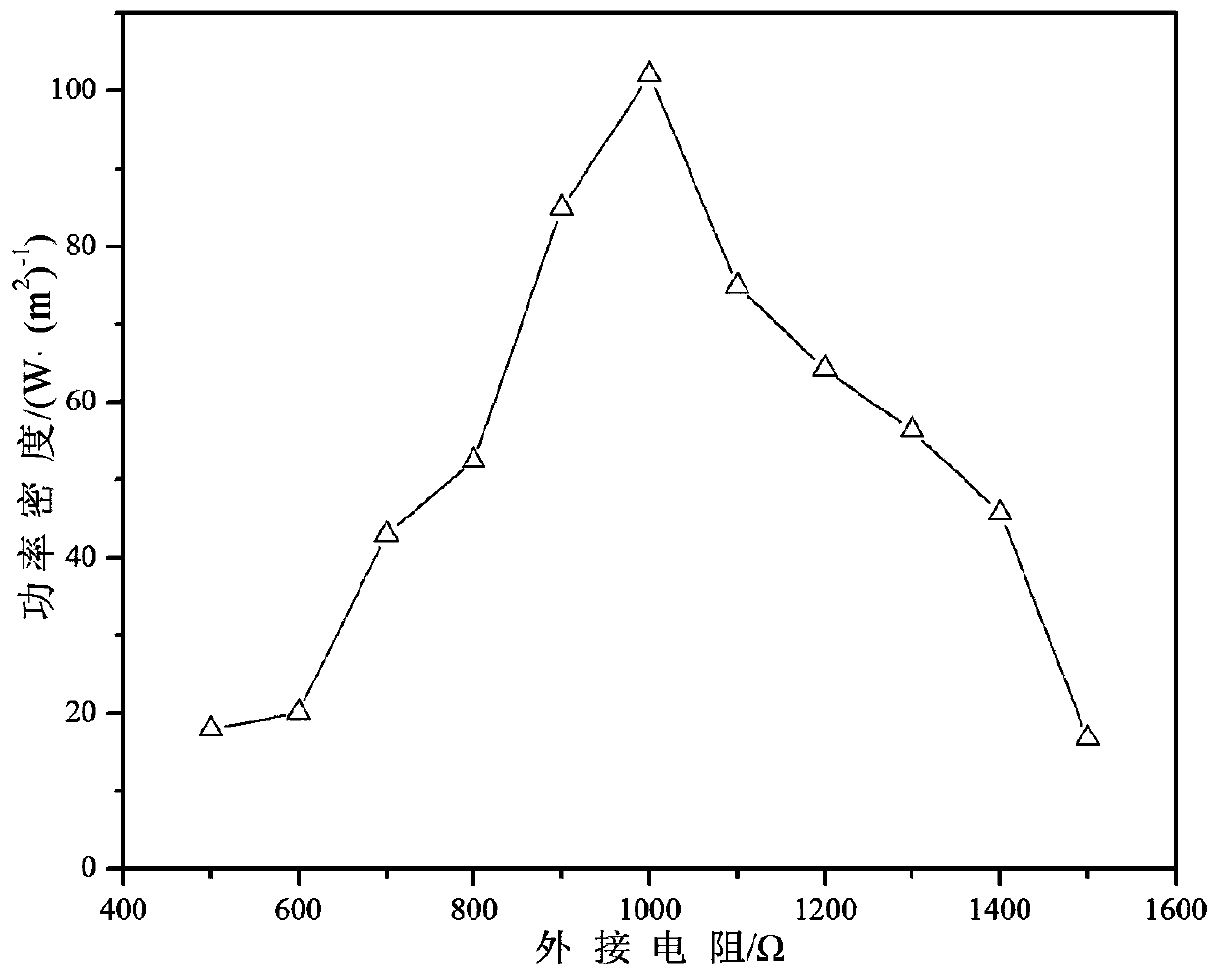A microbial fuel cell toxicity sensor and its operating method
A fuel cell and operating method technology, applied to instruments, scientific instruments, analytical materials, etc., can solve the problems of limiting the expansion of the implementation and application of sensors, external circulation pipes are easily corroded, and insufficient cleaning, etc., to achieve rapid warning of water toxicity Effect, improvement of sewage treatment equipment, effect of short detection time
- Summary
- Abstract
- Description
- Claims
- Application Information
AI Technical Summary
Problems solved by technology
Method used
Image
Examples
example 1
[0062] Example 1 Cr in water 6+ detection
[0063] Starting from the low concentration of chromium (VI) ions, the sensor is impacted, the change of its voltage is recorded, and the value of the inhibition rate is calculated ( Figure 4 ). Among them, in the detection range (0.3 ~ 10mg / L), the heavy metal concentration and the inhibition rate show a good linear relationship, and a linear equation is obtained: R Cr =5.879C Cr +1.259(R 2 = 0.9597).
example 2
[0064] Example 2 Cd in water 2+ detection
[0065] Establish multiple groups of double-chamber MFC reactors, and perform detection experiments and fittings in the same way ( Figure 5 ). Among them, in the detection range (0.4~10mg / L), the heavy metal concentration and the inhibition rate present a good linear relationship, and a linear equation is obtained: R Cd =8.529C Cd -2.869(R 2 = 0.9795).
example 3
[0066] Example 3 Cu in water 2+ detection
[0067] Establish multiple groups of double-chamber MFC reactors, and perform detection experiments and fittings in the same way ( Image 6 ). The inhibition rate has always shown a good linear relationship with the copper ion concentration, but when the copper ion concentration is 160mg / L, a blue precipitate of copper appears in the solution, which will reduce the copper ion concentration in the solution, so it exceeds 160mg / L The copper concentration will no longer be detectable with this sensor. The detection range of copper is 40~160mg / L, and the linear equation can be obtained within the detection range: R Cu =0.368C Cu -10.197(R 2 = 0.9441).
[0068] Sensor repeatability experiment: In order to enable the sensor to operate for a long time, the heavy metal sensor requires stability and accuracy. After the reactor had been running stably for more than three months, 8 groups of concentrations within the detection range were ...
PUM
| Property | Measurement | Unit |
|---|---|---|
| area | aaaaa | aaaaa |
Abstract
Description
Claims
Application Information
 Login to View More
Login to View More - R&D
- Intellectual Property
- Life Sciences
- Materials
- Tech Scout
- Unparalleled Data Quality
- Higher Quality Content
- 60% Fewer Hallucinations
Browse by: Latest US Patents, China's latest patents, Technical Efficacy Thesaurus, Application Domain, Technology Topic, Popular Technical Reports.
© 2025 PatSnap. All rights reserved.Legal|Privacy policy|Modern Slavery Act Transparency Statement|Sitemap|About US| Contact US: help@patsnap.com



